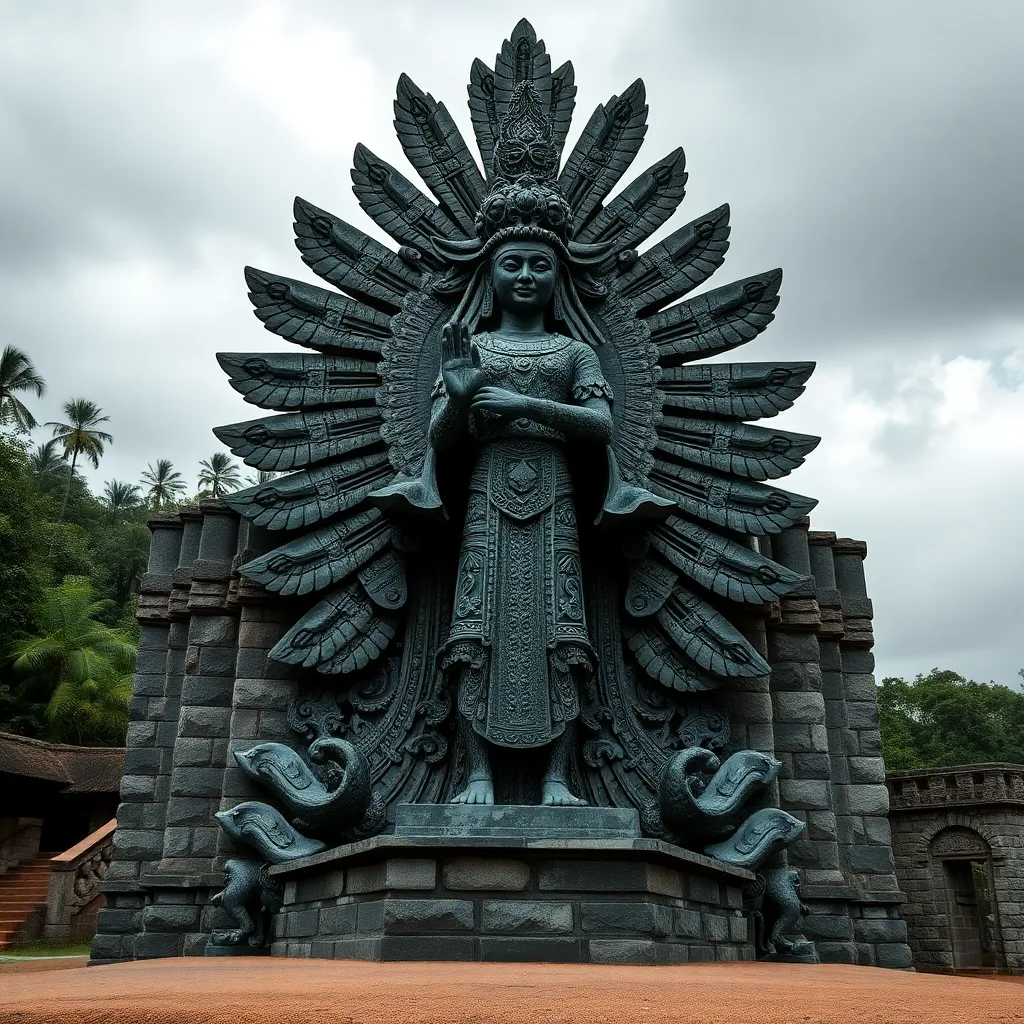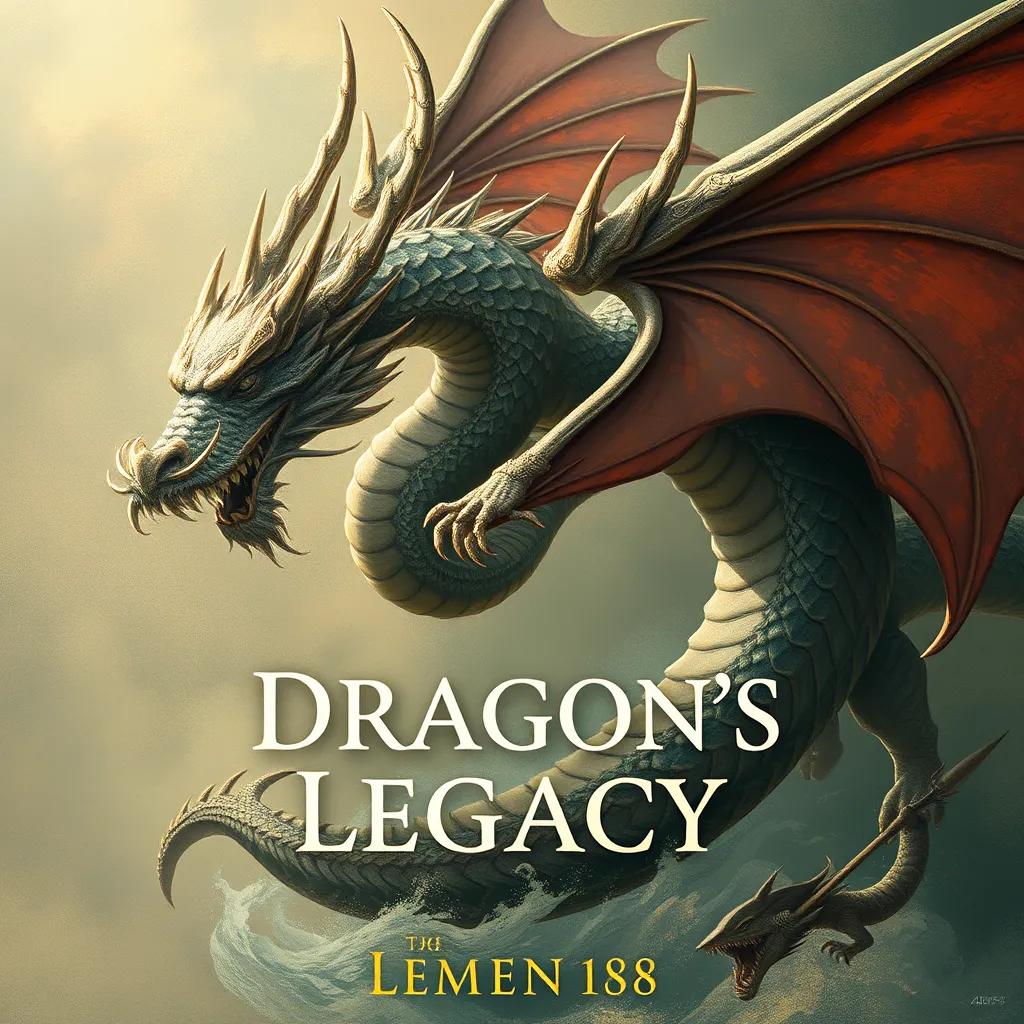Coatlicue’s Legacy: The Enduring Influence of the Aztec Goddess in Mexican Culture
I. Introduction
Coatlicue, the Aztec goddess of earth and motherhood, embodies the duality of life and death, creation and destruction. Revered as the mother of gods, including the sun god Huitzilopochtli, she plays a crucial role in Aztec mythology and cosmology. Her legacy extends beyond ancient times, influencing contemporary Mexican culture in various ways. This article explores the multifaceted impact of Coatlicue through history, art, folklore, spirituality, and popular culture, highlighting her enduring significance in Mexican identity.
II. Historical Context of Coatlicue
A. Origins and myths surrounding Coatlicue
Coatlicue, whose name translates to “Serpent Skirt,” is often depicted as a woman adorned with snakes, symbolizing her connection to the earth and fertility. According to Aztec mythology, she was a powerful deity who gave birth to the moon and stars after finding a ball of feathers. The most prominent myth surrounding her is the story of Huitzilopochtli’s birth, which depicts her as both a nurturing mother and a figure of fierce protection.
B. Role in the Aztec pantheon and society
In the Aztec pantheon, Coatlicue was one of the most important deities. She represented the earth, fertility, and the cycle of life and death. Her worship was integral to agricultural practices, as she was believed to provide sustenance and nurture all living beings. The Aztecs honored her through rituals that often included offerings and sacrifices to ensure her favor for bountiful harvests.
C. Symbolism of Coatlicue in Aztec cosmology
Coatlicue symbolizes the dual nature of existence, embodying both creation and destruction. She is often associated with the earth’s cyclical patterns, representing the continuous cycle of life, death, and rebirth. This duality reflects the broader Aztec worldview, where the balance between opposing forces was essential for harmony in the universe.
III. Artistic Representations of Coatlicue
A. Pre-Columbian art and sculpture depicting Coatlicue
Coatlicue has been a prominent figure in pre-Columbian art, with various sculptures and carvings showcasing her fierce and nurturing aspects. The famous Coatlicue statue, discovered at the Templo Mayor in Mexico City, is a striking representation of her, featuring her characteristic snake skirt and skulls, which evoke the themes of life, death, and fertility.
B. Influence on modern Mexican artists and artisans
Coatlicue’s imagery continues to inspire contemporary Mexican artists. Many embrace her symbolism to express themes of identity, heritage, and resilience. Artists such as Rufino Tamayo and Diego Rivera have incorporated aspects of Coatlicue into their works, blending traditional motifs with modern artistic expressions.
C. Analysis of notable contemporary works inspired by Coatlicue
- Frida Kahlo: Though not overtly focused on Coatlicue, Kahlo’s exploration of identity and femininity resonates with her themes.
- Rocio Rodriguez: The artist’s installations draw from indigenous mythology, featuring Coatlicue as a central figure in contemporary narratives.
- Oaxacan wood carvings: These artisans often depict Coatlicue, showcasing her as a symbol of strength and motherhood in vibrant colors.
IV. Coatlicue in Mexican Folklore and Traditions
A. Stories and legends passed down through generations
Coatlicue’s stories have been passed down through generations, often told during family gatherings and cultural celebrations. These tales emphasize her role as a protector of the earth and a fierce mother, teaching values of resilience and respect for nature.
B. Integration of Coatlicue into traditional celebrations and rituals
Coatlicue is often invoked during traditional festivals, particularly those celebrating fertility, agriculture, and motherhood. Celebrations such as the Day of the Dead incorporate her symbolism, honoring ancestors and the cycle of life, reinforcing her connection to motherhood and the earth.
C. Regional variations in the worship of Coatlicue
Different regions in Mexico have their interpretations and reverence for Coatlicue. In some areas, she is celebrated through specific rituals that highlight local agricultural practices and seasonal changes, reflecting the deep connection between the goddess and the land.
V. Coatlicue and Feminine Identity
A. Exploration of Coatlicue as a symbol of feminine strength and resilience
Coatlicue represents feminine strength, embodying the complexities of motherhood, sacrifice, and resilience. Her image serves as a powerful symbol for women, inspiring them to embrace their strength and nurturing qualities.
B. Her representation in feminist movements in Mexico
In recent years, Coatlicue has been embraced by feminist movements in Mexico, representing the fight for women’s rights and empowerment. Activists draw upon her legacy to highlight the strength of women in the face of adversity, using her story as a rallying point for social change.
C. Connection to contemporary discussions on gender and motherhood
Coatlicue’s representation in modern discussions about gender and motherhood reflects a broader acknowledgment of the sacrifices and struggles faced by women. Her dual nature as a nurturing mother and a fierce protector resonates with contemporary issues, encouraging dialogue about women’s roles in society.
VI. The Role of Coatlicue in Modern Spirituality
A. Reinvigoration of indigenous spiritual practices
In recent decades, there has been a resurgence of interest in indigenous spiritual practices, with Coatlicue being a central figure in many contemporary rituals. Her worship has evolved, incorporating elements of modern spirituality while maintaining traditional beliefs.
B. Coatlicue’s influence on neo-pagan and new-age movements
Coatlicue’s attributes have also influenced neo-pagan and new-age movements, where she is often revered as a goddess of nature and fertility. Her symbolism of the earth and cycles of life aligns with the philosophies of many modern spiritual practitioners.
C. Rituals and practices honoring Coatlicue today
Today, rituals honoring Coatlicue may include offerings of flowers, food, and prayers, often performed in natural settings. These practices aim to connect individuals with the earth and embrace the nurturing aspects of motherhood that Coatlicue represents.
VII. Coatlicue in Popular Culture
A. Representation in literature, film, and music
Coatlicue’s influence extends into popular culture, where she is often portrayed in literature, film, and music. Her stories and symbolism are explored in various narratives, showcasing her relevance in contemporary storytelling.
B. The impact of Coatlicue on Mexican identity in a globalized world
As Mexico continues to navigate globalization, Coatlicue remains a vital aspect of national identity. Her enduring legacy fosters a sense of pride in indigenous heritage, connecting modern Mexicans to their ancestral roots.
C. Analysis of popular media that draws inspiration from Coatlicue
- Film: Movies such as “The Book of Life” feature elements inspired by Aztec mythology, including Coatlicue.
- Literature: Modern novels often incorporate Coatlicue’s symbolism to explore themes of identity and culture.
- Music: Various contemporary musicians reference Coatlicue in their lyrics, celebrating her legacy and the strength of women.
VIII. Conclusion
Coatlicue’s enduring legacy in Mexican culture is a testament to the richness of indigenous heritage and the complexities of identity. As a symbol of motherhood, strength, and the cyclical nature of life, she continues to inspire contemporary discussions on gender and spirituality. Preserving the stories and traditions surrounding Coatlicue is vital for honoring the past while fostering a deeper understanding of the present. In a world that often overlooks indigenous narratives, Coatlicue stands as a powerful reminder of the resilience and richness of Mexican culture.



